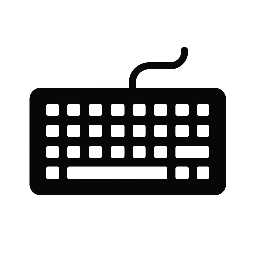Ever wonder why a bunch of coffee‑stained, hoodie‑wearing folks keep coming back to the keyboard, even when the code feels like a maze? It’s not just the paycheck or the buzz of a new tech stack. It’s the little victories, the “aha!” moments, and the sense that you’re building something that can change the world—one line at a time. Let’s dive into what makes software engineering a joyride, and how you can ride it with a grin on your face.
1. The Sweet Spot of Problem‑Solving
Picture this: you’re stuck on a bug that’s been haunting you for hours. Your screen is a collage of stack traces, logs, and a blinking cursor. Then, you spot a typo in a config file, hit Enter, and the app runs flawlessly. That instant relief? Pure bliss.
Why it matters: Every bug fixed is a mini‑celebration. It’s like solving a puzzle where the pieces are code, logic, and a dash of curiosity. The thrill of turning a “no” into a “yes” is what keeps many of us glued to the screen.
2. The Power of Automation
Remember the first time you wrote a script that automated your daily grind? Maybe it was a Bash script that renamed thousands of photos, or a Python program that scraped weather data for your blog. Suddenly, you’re not doing the same repetitive task over and over.
Real‑life example: I once built a tiny Node.js tool that pulled my GitHub contributions and posted a daily tweet. The first tweet was a fluke, but the next 30 days? I didn’t have to remember to tweet manually. The joy? Knowing that a few lines of code saved me hours of manual effort.
3. The Community Vibe
Software engineering isn’t a solo sport. Think of the countless open‑source projects, the Stack Overflow threads, the Discord channels where you can ask a question and get an answer in seconds.
Personal anecdote: I was once stuck on a tricky React hook. I posted a question on a Slack channel, and a fellow dev replied with a concise explanation and a link to a tutorial. That instant connection—knowing someone else has been in your shoes—makes the journey less lonely.cise but descriptive enough to keep readers engaged. This is where the substance of your article begins to take shape.


4. Continuous Learning, Endless Curiosity
Every new framework, language, or design pattern feels like a fresh adventure. The tech world moves fast, and that pace keeps the job exciting.
Practical advice: Set aside 30 minutes a week to read a blog post, watch a tutorial, or experiment with a new library. Even a quick “Hello, World!” in Rust or a tiny Go microservice can spark a new passion.
5. Building Something That Matters
There’s a unique satisfaction in seeing your code run on a server, powering a website, or enabling a mobile app that millions use. That tangible impact is a powerful motivator.
Rhetorical question: Have you ever watched a user’s face light up when a feature you built solves a real problem? That’s the sweet spot where code meets humanity.
6. The Flexibility Factor
Software engineering offers a rare blend of creativity and structure. You can work from a coffee shop, a co‑working space, or your living room. You can choose your stack, your tools, and even your work hours.
Colloquial twist: It’s like being a chef who can decide whether to cook a fancy soufflé or a quick sandwich—only the ingredients are code, APIs, and a sprinkle of imagination.
7. The “Eureka” Moments
Those moments when a complex algorithm suddenly clicks, or when a refactor makes your code cleaner and faster—those are the real joys.
Example: I once refactored a legacy Java codebase, replacing nested loops with streams. The performance improved by 40%, and the code looked like poetry. The feeling? Like a composer finally hearing the symphony of their work.
8. The Growth Mindset
Every project, no matter how small, is a chance to grow. You learn new patterns, discover better ways to structure code, and refine your debugging skills.
Practical tip: Keep a “learning journal.” Write down what you tried, what worked, and what didn’t. Over time, you’ll see a clear trajectory of improvement.
9. The Joy of Collaboration
Pair programming, code reviews, and sprint meetings are not just checkpoints—they’re opportunities to learn from others, share ideas, and celebrate collective wins.
Personal story: During a sprint review, my teammate presented a feature that used a novel design pattern. We spent the next day dissecting it, and I ended up adopting it in my own project. The shared excitement? Priceless.
10. The Endless Playground
Finally, software engineering is a playground where the rules are constantly evolving. You can experiment with AI, blockchain, or even quantum computing. The possibilities are endless.
Thoughtful pause: Imagine building a chatbot that can write poetry, or a decentralized app that changes how we share data. The future is a canvas, and you’re the artist.
Takeaway
Software engineering isn’t just a job; it’s a journey of curiosity, creativity, and community. The joys come from solving puzzles, automating the mundane, learning new things, and building products that touch lives. So next time you’re staring at a line of code, remember: you’re not just writing software—you’re crafting experiences, solving real problems, and being part of a vibrant, ever‑evolving community.
Happy coding, and may your bugs be few and your “aha!” moments plentiful!


Leave a Reply